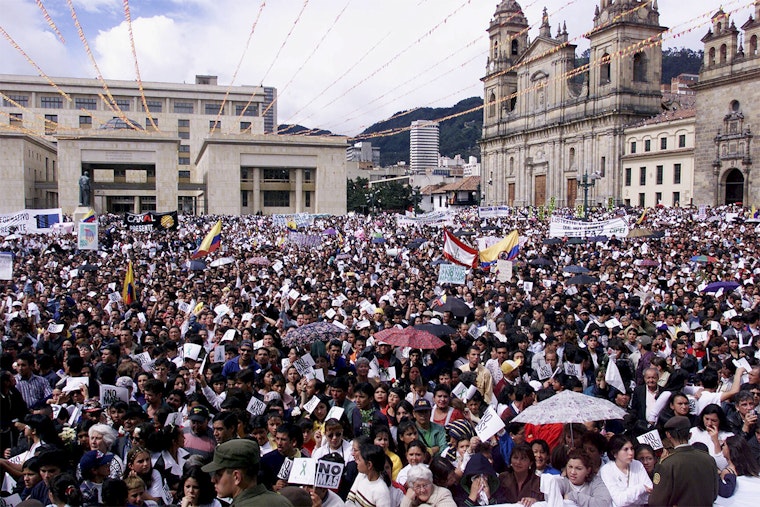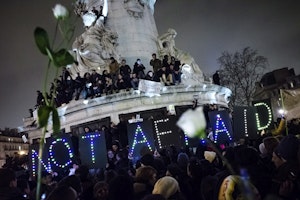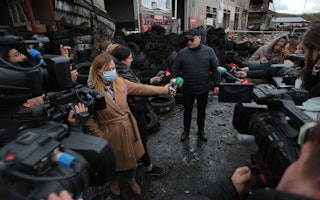What Colombia Can Teach France About Political Cartoons
By Maria Teresa Ronderos

Three days after the deadly assault on the offices of Charlie Hebdo, millions of French citizens rose up all across the country and marched defiantly in solidarity with the victims. People lined up in the cold for hours to buy a copy of the first post-attack issue. Such was the demand that in place of the normal run of 60,000, seven million copies of Charlie Hebdo were printed.
Political violence has been the norm in my home country of Colombia for more than 30 years. One hundred thousand social and political activists have been killed there, mostly because their ideas threatened powerful armed men. We understand what France must be feeling after the Charlie Hebdo massacre—since 1977, 140 Colombian journalists have been killed in the line of duty. Many more reporters have been forced into exile, raped, beaten, shot at, or threatened. Newsrooms have been bombed, entire editions of magazines and newspapers destroyed to prevent publication. Even though the scale of violence has subsided, 112 reporters have special governmental protection because their lives are at risk.
The Colombian public reacted with unprecedented rage and sadness when Jaime Garzón, a 39-year-old television comedian, was killed in August 1999. Thousands took to the streets spontaneously. A shrine was built at his favorite restaurant, and the street where he lived was lined with flowers for months after his death. Today, 15 years later, Colombians still miss his wit. The last character Garzón played was a shoe shiner who smartened up the politicians’ boots. Garzón told one politician that he had to secure his brushes and shoe polish because with him around, “you never know what might get stolen.”
Garzón spoke truth to power in a way others wouldn’t dare, and in doing so he voiced the frustrations of the people.
The outpouring of such collective sentiment in France expressed more than outrage at the brutality of Kalashnikovs cutting down an impish pencil. People took the attack personally because it targeted political humor. Satire like this requires a particularly intimate complicity between the cartoonist or the comedian and his public. Just a few strokes of ink and a caption invite the reader to complete the idea and smile. A joke only comes to life when the audience laughs. It is in this cherished space—the place where power is challenged—where the subtle conversation between humorists and citizens occur. It is this discourse that was threatened in Paris and which needs to be protected.
Humor should be the ultimate free zone where mischievous spirits can shine a light on the powerful. We have afforded them the right to say things not tolerated elsewhere. Society can say what is forbidden, state the outrageous, undress the powerful, and, yes, offend the sacred. It does not mean their ideas are always the right ones, nor that they should be applauded for sacrilege. This right has been cherished by humanity for centuries, since the times of court jesters and fools. Satirists fly in the face of common sense and do so with impunity. If we close down this frontier of freedom, then who amongst us that is left would be free?
Until December 2018, Maria Teresa Ronderos was director of the Open Society Program on Independent Journalism.


